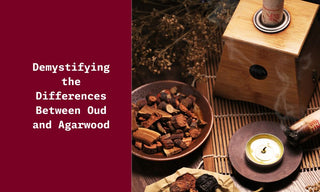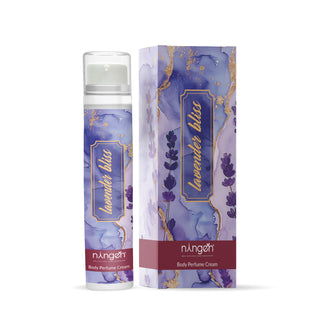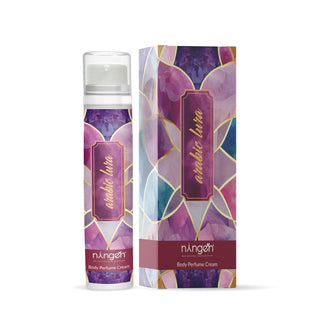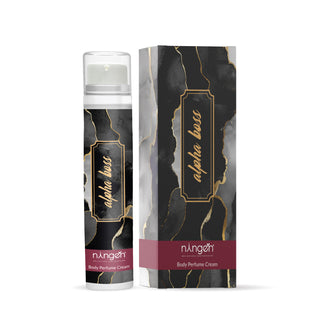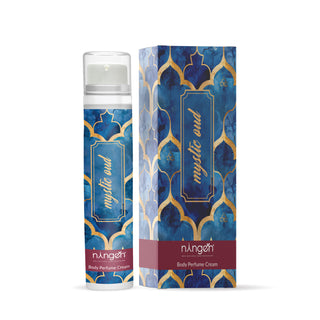Have you ever wondered about the differences between oud and agarwood?
They're both prized for their captivating scents, but what sets them apart?
In this blog, we're demystifying the differences between oud and agarwood. Whether you're a fragrance enthusiast or just curious about these exotic scents, we'll explore the origins, aromas, and uses of oud and agarwood. So, let's dive in and unravel the mystery behind these fascinating fragrances!
In This Article;
- What is Agarwood?
- What is Oud?
- The Aromatic Differences Between Agarwood and Oud
- The Perfume Industry and Agarwood
- Synthetic Alternatives to Agarwood and Oud
- Agarwood and Oud in Different Cultures
- The Real vs. Fake Agarwood/Oud Experience
- The Bottom Line
- TL;DR
- Frequently Asked Questions
What is Agarwood?
Agarwood, also known as oud or oudh, is a rare and precious form of resinous heartwood that comes from agarwood trees, primarily belonging to the genus Aquilaria, and a lesser extent Gyrinops and Aetoxylon. It's known for its unique and rich fragrance, which has made it a coveted resource in the perfume industry.
The development of agarwood occurs in the heartwood of these trees when they become infected with a type of mold. This infection triggers a defense mechanism, resulting in a dense, dark and aromatic resin to form within the heartwood.
Understanding the Agarwood Tree
The agarwood tree, native to Southeast Asia and found in countries like India, Thailand, Vietnam, and Indonesia, thrives in tropical forests. Recognizable by its pale bark and dense branches, it's the Aquilaria species that are most linked with agarwood production.
Interestingly, this wood remains unremarkable until it's infected with certain molds. This infection triggers a dramatic change, turning the light heartwood into the prized, darkly scented agarwood.
Production and Sources of Agarwood
Agarwood, a precious resource, isn't easily obtained; it can take years, even decades, for the resinous wood to form after the tree gets infected. Unfortunately, overharvesting and habitat loss have led to a decline in wild agarwood trees. To meet demand sustainably, many are turning to plantation cultivation.
Certain regions in Southeast Asia excel in agarwood production, thanks to their climate and abundance of Aquilaria trees. The process is intricate, involving precise tree inoculation, followed by careful harvesting and processing to extract oud oil or resinous chunks used in various industries.
Grades of Agarwood
JAgarwood quality varies widely, influenced by factors like the wood's age, level of infection, and aroma strength. Grading systems can be complex and vary by region and trader. Generally, grades span from lower-quality agarwood, suitable for incense or wood chips, to the highest grades prized for luxury perfumes and oils. The finest grades are distinguished by their deep darkness, density, and intense aroma, commanding higher prices and greater demand.
What is Oud?
Oud, also known as Oud Wood or Agarwood, is a prized ingredient in perfumes. It comes from the resinous heartwood of agarwood trees, which develop it when infected with mold. This process creates a dark, fragrant wood highly valued for its scent. Oud holds cultural significance, especially in Arab countries, where it's used in perfumes and incense. Its production is intricate and costly, making it one of the world's most expensive perfume ingredients.
Exploring the Aroma of Oud
Oud possesses a unique and captivating fragrance that is highly prized within the perfume composition sphere. It exhibits a natural perfume that's rich, musty, and woody with a slight hint of sweetness, which makes it a desirable base note in perfumes. Its depth provides a lasting scent that is both exotic and comforting.
The natural fragrance of oud seamlessly blends into perfumes, offering a note that can enhance and elevate perfume blends. It's also commonly used in oil form, applying directly to the skin for a long-lasting, natural scent, which integrates harmoniously with the body's chemistry to create a distinctive aroma for each individual.
Production and Sources of Oud
Oud production traditionally begins in the wild forests of Southeast Asia, mainly in countries like India, Thailand, and Indonesia. Obtaining this aromatic wood from Aquilaria trees can take years or even decades due to the formation of resinous heartwood resulting from infection.
To prevent overharvesting, the industry has shifted towards sustainable plantations. These efforts aim to conserve wild species while meeting demand. Additionally, methods like artificial heartwood infection are emerging to ensure a continuous supply. Saudi Arabia also holds significance in the oud trade, appreciating its use in personal scenting and the perfume market.
Grades of Oud
Oud is categorized in a wide range of quality grades, which vary according to the age of the tree, density of the resinous wood, the geographic location, and other factors contributing to the scent profile. The grading often includes:
- First Grade: Premium quality, extremely aromatic, dark, and resinated.
- Second Grade: High quality, slightly less intense in fragrance and resin content.
- Third Grade: Standard quality used in mainstream perfumery and incense making.
- Fourth Grade: Lower quality often used for oil extraction or for its woody scent.
The grading impacts the price and applications of oud, with higher-grade ouds commanding significantly higher prices and often being reserved for luxury perfumes and high-end natural perfumes.
The Aromatic Differences Between Agarwood and Oud
Agarwood and oud, though often spoken of interchangeably, point to different stages in the fragrance journey of the same material. Agarwood refers to the infected heartwood of the Aquilaria trees, which is the source of the luxurious oud scent. The aroma difference between the two is nuanced—agarwood in its raw, unprocessed form emits a more subtle and less intense scent compared to oud, which is the concentrated, resinous extract from the agarwood and possesses a deeper, richer, and more potent fragrance. Essentially, all oud comes from agarwood, but not all agarwood develops into the high-quality oud used in fine perfumery.
Aroma Profiles of Agarwood
Raw agarwood, before undergoing the distillation process to become oud, provides a diverse scent profile. In its natural state, the aroma tends to be less pronounced with a gentle, woody, and slightly sweet fragrance. The scent of agarwood can vary significantly depending on several factors such as the age of the infected wood, the climate of the region it grows in, and the particular species of Aquilaria tree. Generally, its natural perfume is described as soft and earthy with various degrees of intensity.
Aroma Profiles of Oud
Oud, the result of the resinous heartwood's defense against fungal attack, conveys an intricate and profound aroma. The scent profile is multifaceted, offering a warm, sweet, woody base with smoky, musky, and animalistic undertones that give it exceptional staying power as a note in perfumes. The rich and complex nature of oud aroma makes it stand out as a luxurious and highly desired ingredient in the competitive perfume industry. Each oud oil can exhibit different nuances, which can include notes of leather, spices, or even a balsamic quality.
Factors Influencing Aroma Differences
Several factors contribute to the differences in aroma between agarwood and oud:
- Maturity of Infection: The length of time the tree has been infected influences the intensity of the scent. Older infections typically result in a more resinous and potent oud.
- Distillation Process: The method and duration of distillation shape the aroma profile of the oud oil. For example, a longer distillation period may produce a deeper, more profound scent.
- Geographical Origin: The region where the Aquilaria trees grow impacts the wood's scent due to differences in soil composition and climate, thus influencing the agarwood's and subsequently the oud's aromatic properties.
- Tree Species: There are several species of Aquilaria trees, and each can yield a different type of wood with distinctive traits.
- Cultural Techniques: Traditional harvesting and processing methods passed down through generations can lead to unique scent profiles characteristic to certain areas, particularly in Southeast Asia and Arab countries.
Understanding these aroma profiles and their influencing factors lead to a more informed appreciation of the role that both agarwood and oud play in the fragrance industry.
The Perfume Industry and Agarwood
Agarwood and its derivative, oud, are prized in the perfume industry for their rarity and complex scents. Originating from Southeast Asia, oud's use in fragrances has a rich history, especially in Arab countries where it symbolizes opulence. Agarwood trees produce resinous heartwood as a defense against fungal infection, which over time transforms into agarwood. When distilled, it yields oud oil with a potent scent. While agarwood production can be induced artificially, wild trees still produce the most valued oud. Due to its scarcity and labor-intensive extraction process, oud remains one of the world's most expensive perfume ingredients.
The Use of Agarwood and Oud in Perfumes
In the realm of perfumery, agarwood and oud serve as significant elements for their resplendent and distinctive characteristics. Their scents are often associated with mystery, depth, and luxury. Agarwood provides a softer, more nuanced woody note in perfumes, while oud contributes a bolder, richer accent often serving as the anchor or base note in perfume composition. Oud perfumes are sought after for their warmth and longevity, creating aromatic experiences that are both memorable and unique.
The wide range of aroma profiles that can be achieved with oud allows for a substantial palette for perfumers to draw from, making it a versatile ingredient for crafting exclusive scents. From the smoky and leathery to the sweet and spicy, oud's ability to harmonize with other fragrances is unparalleled. The smell of oud, intense and alluring, has thus become a cornerstone in the creation of luxury and niche perfumes.
Perfume Composition and the Role of Agarwood/Oud
In crafting a fragrance, the balance of top, middle, and base notes is crucial, and agarwood and oud often play defining roles within this structure. Perfume composition involves a meticulous layering process where each ingredient is chosen for its ability to blend and evolve with others. Oud, in particular, is frequently used as a base note due to its natural longevity on the skin. It acts as a foundation upon which the lighter top and heart notes can exhibit their full range of scents.
The role of agarwood and oud within a perfume's composition goes beyond their own aromatic profiles; they enhance and elevate the natural perfumes of other ingredients. This synergistic effect can transform the entire sensory experience of a fragrance, showcasing the depth and complexity that natural ingredients can provide.
The Demand for Agarwood and Oud in the Perfume Industry
The demand for agarwood and oud in perfumery is surging, driven by a desire for luxury and authenticity. These prized ingredients are carefully chosen for high-end and niche fragrances, particularly in regions like Saudi Arabia where oud holds cultural significance. While artificial cultivation of agarwood trees is increasing, wild-sourced agarwood and oud oils remain the pinnacle of quality. As the fragrance industry expands, agarwood and oud will remain essential for creating sophisticated and exceptional perfumes.
Synthetic Alternatives to Agarwood and Oud
The perfume industry is turning to synthetic alternatives to agarwood and oud to replicate their alluring fragrance sustainably and affordably. While these alternatives mimic the warm, complex notes of natural oud, some argue they lack its nuanced quality. However, advancements in fragrance technology have led to synthetic compounds resembling natural oud, offering adjustable wood notes. This not only conserves wild agarwood but also ensures consistent quality and affordability in perfume production.
The Preference of Consumers for Natural Perfumes
Despite synthetic alternatives, more consumers are gravitating toward natural perfumes, particularly those with real oud and agarwood.
Natural ingredients are prized for their authenticity, traditional significance, and perceived luxury. This trend reflects a growing interest in sustainability and eco-consciousness, with consumers seeking transparency in ingredient sourcing and ecological impact.
As a result, the market for natural fragrances, including those featuring genuine agarwood and oud oils, is on the rise.
Agarwood and Oud in Different Cultures
Agarwood and Oud have been enchanting the senses across various cultures for centuries. Revered for their distinctive aroma, these fragrant materials are more than just ingredients in perfumes; they are an integral part of cultural traditions and rituals around the world. The heartwood of the Aquilaria tree undergoes a remarkable transformation, becoming resinous and aromatic only after it is infected by a specific type of mold. This infected heartwood, or agarwood, is then processed to obtain the precious oud oil, which captivates with its complex and unique scent profile.
Agarwood and Oud in Southeast Asia
Agarwood holds esteemed status in Southeast Asia, where it's deeply ingrained in local culture beyond its use in perfumery. Indigenous to dense tropical forests, Agarwood trees, particularly Aquilaria species, are prized for their resinous heartwood. In nations like Vietnam, Thailand, and Cambodia, agarwood production is both an economic mainstay and a traditional craft. The techniques to induce and harvest resin are heritage practices, blending art and science across generations.
Agarwood and Oud in Arab Countries
Oud holds a revered status in Arab countries, notably in places like Saudi Arabia, embodying notions of hospitality, opulence, and personal grooming. Its rich, sweet, and smoky aroma is deeply intertwined with Arabic culture, permeating religious ceremonies, weddings, and daily life. Oud's scent is so esteemed that it's synonymous with luxury, gracing clothing and homes. With a plethora of oud perfumes available, its depth and lasting power make it a prized ingredient, often dubbed 'liquid gold' due to its exorbitant cost in the fragrance realm.
The Real vs. Fake Agarwood/Oud Experience
Differentiating between real and fake agarwood or oud is crucial for an authentic scent experience. Genuine agarwood, sourced from Aquilaria trees' resinous heartwood, boasts a complex aroma that synthetics struggle to match. Counterfeits lack depth and complexity, offering a uniform scent profile. Authentic oud features warm, sweet, woody, and balsamic notes, sometimes with smoky undertones, reflecting its natural origin and cultural significance.
Identifying Real Agarwood and Oud
To discern genuine agarwood and oud, experts consider various factors. Authentic agarwood is notably heavier and denser, owing to its resin content, and when burned, it releases a multifaceted aroma that evolves. Conversely, fake agarwood tends to emit a consistent, less complex scent when burned.
Visual cues are also important; real oud wood often exhibits dark resin veins, evidence of natural infection, while synthetic versions may lack these distinctive markings.
Furthermore, pure oud oils have a dense consistency and develop a richer scent profile with age, unlike synthetic alternatives that may degrade over time.
Note: Click on the link to explore our Revolutionary Mystic Oud Body Perfume Cream.
Differentiating between Natural and Synthetic Oud Scents
Natural oud offers a nuanced complexity that synthetic versions struggle to replicate. In perfumes, it unfolds in layers, with top, heart, and base notes evolving uniquely on each individual's skin. Synthetic oud lacks this depth, often presenting a linear scent profile.
Additionally, natural oud interacts with body chemistry, creating a personalized scent. While synthetic oud is more cost-effective and sustainable, it lacks the warm, nuanced aroma of its natural counterpart, which is intricately tied to traditional agarwood harvesting methods in countries like Vietnam and Cambodia.
Detecting Fake Oud in Perfumes(highlight)
Detecting fake oud in perfumes can be tricky due to the complexity of fragrance compositions.
One method is to assess the fragrance's longevity and evolution on the skin—real oud lingers and subtly changes over time.
Additionally, authentic oud leaves a deep, pervasive scent trail. Look for reputable brands with transparent practices, as labels like "oud accord" may indicate synthetic alternatives.
While synthetic oud serves practical purposes, nothing compares to the profound experience of natural oud. Understanding the differences between real and fake oud enhances appreciation for this extraordinary perfume ingredient.
The Bottom Line
Hope this article provided you with enough knowledge about the difference between Oud and Agarwood. Agarwood and oud, often conflated, originate from Southeast Asian forests. Agarwood denotes the non-infected wood, while oud refers to the aromatic resin produced within the infected heartwood. Oud's deep, smoky aroma is prized in perfumes, especially in Arab countries like Saudi Arabia. Its rarity and labor-intensive production make it one of the costliest perfume ingredients, embodying luxury and tradition in fragrance compositions with the smell of oud.
|
Term |
Definition |
|
Agarwood |
The wood of the Aquilaria trees |
|
Oud |
The aromatic resin found in agarwood |
Explore our innovative Body Perfume Creams including oud in the designated category.
TL;DR
Agarwood and oud are often used interchangeably but refer to different elements of the same source: the resinous heartwood of Aquilaria trees. Agarwood is the non-infected wood, while oud is the aromatic resin produced within infected heartwood. Oud is prized for its deep, smoky aroma and cultural significance, particularly in Arab countries. Detecting fake oud in perfumes can be challenging, but assessing longevity and scent evolution on the skin can help. While synthetic alternatives exist, nothing compares to the authentic experience of natural oud, which is valued for its complexity and tradition in fragrance compositions.
Frequently Asked Questions
Question: What is Agarwood?
Answer: Agarwood is a resinous heartwood that forms in Aquilaria trees when they become infected with a specific type of mold. Native to Southeast Asia, this type of wood undergoes a transformative process resulting in a rich, dense resin known for its distinctive aroma.
Question: What is Oud?
Answer: Oud, also known as Oudh, is essentially the same as agarwood. It refers to the fragrant resin produced within the agarwood tree. However, "oud" is particularly the term used within the Arab countries and the fragrance industry.
Question: How is Agarwood Used?
Answer: The primary use of agarwood is in the production of agarwood oils, which are then utilized in Oud perfumes. It's prized as a luxurious ingredient in perfumes due to its unique smell.
Question: Why is Oud So Expensive?
Answer: Oud is one of the most expensive perfume ingredients in the world because of its rarity, the long time it takes for the resin to form, and the intricacies involved in extraction.
Question: Are all Agarwood Products the Same?
Answer: Not all agarwood products are alike. The quality of agarwood can vary significantly, with factors such as the age of the tree and the extent of infection affecting the scent and value of the final product. Real agarwood from wild trees is considered the most valuable.
Question: How is Agarwood Sustainably Sourced?
Answer: Sustainable sourcing of agarwood is vital due to overharvesting. Cultivation practices and plantations have been developed to protect wild trees while meeting the demand for this natural ingredient in the perfume industry.


